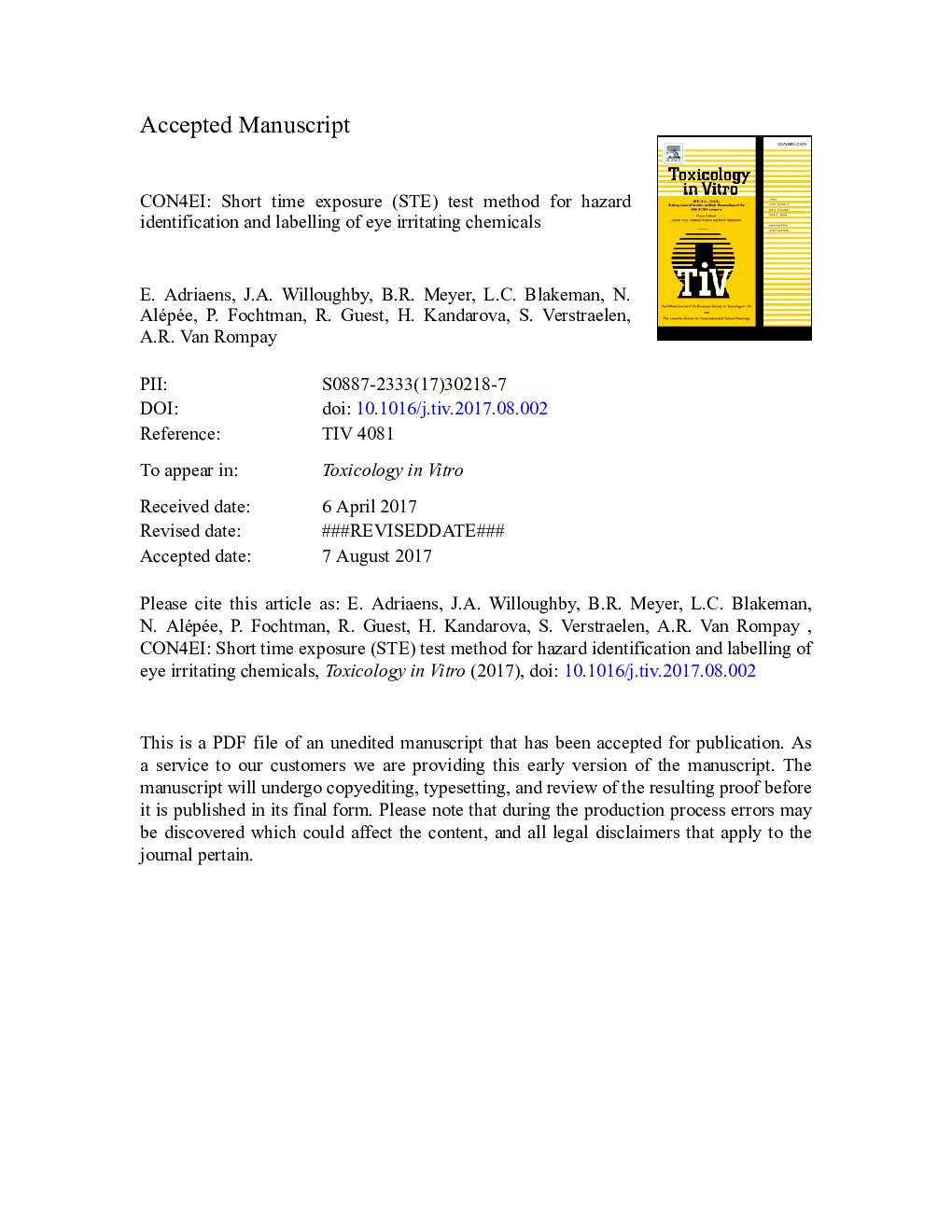| Article ID | Journal | Published Year | Pages | File Type |
|---|---|---|---|---|
| 8553880 | Toxicology in Vitro | 2018 | 32 Pages |
Abstract
The accuracy of the STE test method to identify Cat 1 chemicals was 61.3% with 23.7% sensitivity and 95.2% specificity. If non-soluble chemicals and unqualified results were excluded, the performance to identify Cat 1 chemicals remained similar (accuracy 62.2% with 22.7% sensitivity and 100% specificity). The accuracy of the STE test method to identify No Cat chemicals was 72.5% with 66.2% sensitivity and 100% specificity. Excluding highly volatile chemicals, non-surfactant solids and non-qualified results resulted in an important improvement of the performance of the STE test method (accuracy 96.2% with 81.8% sensitivity and 100% specificity). Furthermore, it seems that solids are more difficult to test in the STE, 71.4% of the solids resulted in unqualified results (solubility issues and/or high variation between independent runs) whereas for liquids 13.2% of the results were not qualified, supporting the restriction of the test method regarding the testing of solids.
Keywords
UN GHS classification for chemicals causing irreversible effects on the eye/serious damage to the eyeCONsortium for in vitro Eye Irritation testing strategySLSDPBSSIRCOECDDRDFPRFNRCON4EISTEDMSOUN GHSOcular irritationtest guidelineDimethyl sulfoxideUnited Nations Globally Harmonized System of Classification and Labelling of ChemicalsOrganization for Economic Co-operation and Developmentsodium lauryl sulfatePersDulbecco's phosphate buffered salinePersistenceFalse positive rateFalse negative rateoptical densitycorneal opacitySolvent controlPositive controlCONJCat 1Cat 2
Related Topics
Life Sciences
Environmental Science
Health, Toxicology and Mutagenesis
Authors
E. Adriaens, J.A. Sr., B.R. Meyer, L.C. Blakeman, N. Alépée, P. Fochtman, R. Guest, H. Kandarova, S. Verstraelen, A.R. Van Rompay,
